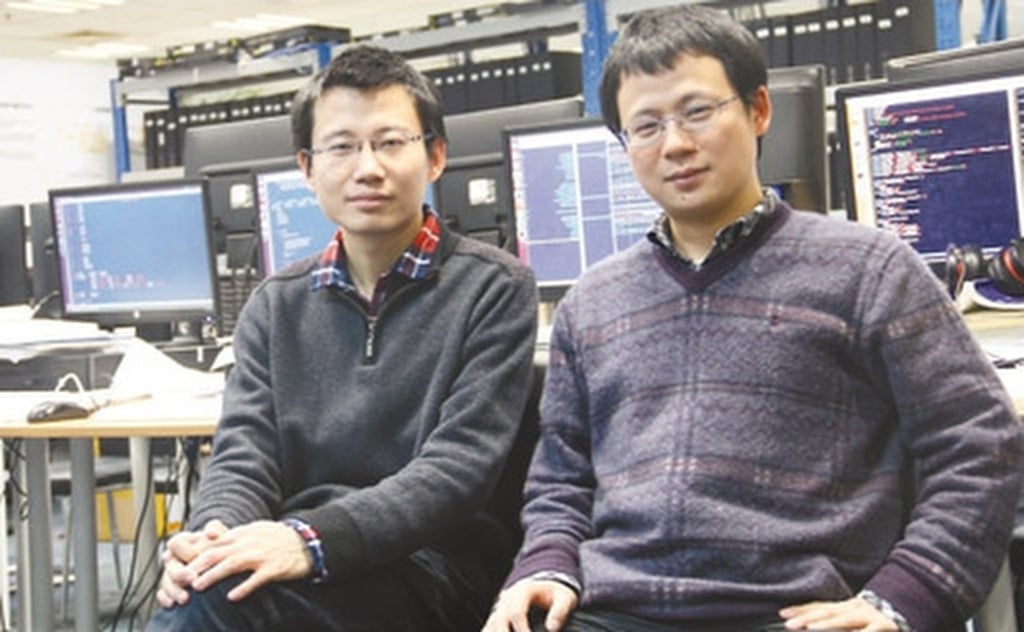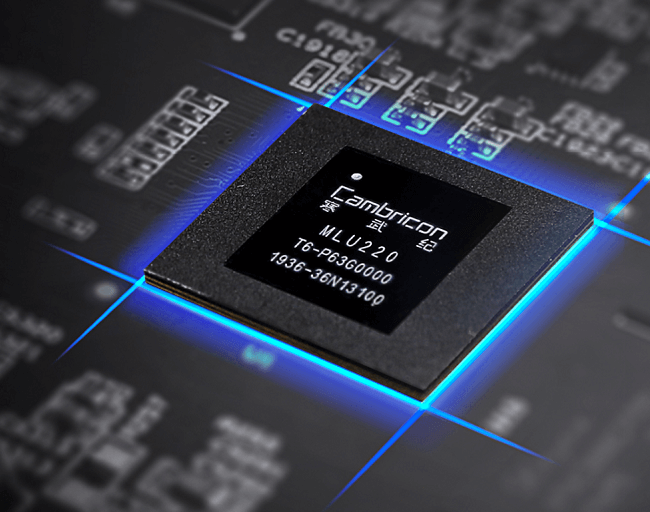- Introduction to Cambricon: An overview of the fast-growing Chinese AI chip design company.
- Founding Story: Founded in 2016 by brothers Chen Yunji and Chen Tianshi as a spin-off from the Chinese Academy of Sciences.
- Core Business: Designs and sells specialized AI chips for cloud servers and edge devices, with its "Siyuan" series being a key product line.
- Impact in China: Has become a crucial player in China's push for technological self-sufficiency, particularly in the face of U.S. export controls on advanced AI chips.
- Financial Boom: Experienced a massive surge in revenue and profitability in the first half of 2025, leading to a dramatic rise in its stock price.
- Recent Traction: Its recent growth is driven by soaring AI chip demand in China, strong government support, strategic partnerships with major AI model developers, and the ongoing geopolitical tech rivalry.
By now you should've heard the name "Cambricon" being touted on the news and almsot everywhere, so let's talk about a company that's making more waves in the semiconductor world than a toddler in a bathtub. Introducing Cambricon, and if you haven't heard of it yet, you probably will soon. Think of it as China's Rocky Balboa in the global AI chip boxing ring, with Nvidia playing the part of a very, very confident Apollo Creed.
From Academic Brainchild to AI Powerhouse
So, who are the masterminds behind this rising star? Cambricon was cooked up in 2016 by two prodigiously smart brothers, Chen Yunji and Chen Tianshi. We're talking about guys who earned their PhDs in computer science before most of us figured out how to properly fold a fitted sheet. Their journey began not in a garage, but in the hallowed halls of the Chinese Academy of Sciences (CAS), the country's top scientific research institution.

The brothers were pioneers in a project to create brain-inspired processor chips specifically for deep learning. You see, they recognized early on that traditional CPUs and even GPUs weren't quite the right tools for the Herculean task of powering artificial intelligence. They envisioned chips that were smaller, sipped power like a connoisseur tasting fine wine, and were more affordable. In essence, they wanted to build the perfect brain for the thinking machines of the future. This vision, born from a CAS project, was spun off to become Cambricon Technologies.
What Exactly Does Cambricon Do?
In simple terms, Cambricon designs and sells specialized AI chips. These aren't your run-of-the-mill processors that power your laptop for browsing cat videos. These are highly specialized pieces of silicon designed to handle the massive computational loads required by AI applications, from training large language models to powering the smart features in your phone. Their product lines cover the whole gamut, from powerful chips for cloud servers to smaller, more efficient ones for "edge" devices like smart cameras and industrial robots.
Their flagship products, the "Siyuan" series of cloud AI chips, are the ones making the big headlines. The recently launched Siyuan 590 is already giving some of Nvidia's older chips a run for their money, and the upcoming Siyuan 690 is rumored to be nipping at the heels of Nvidia's mighty H100. It's like a promising rookie stepping up to the plate against a seasoned home run king.

Making a Splash in the Middle Kingdom
Cambricon's impact within China has been nothing short of meteoric, especially in the last year or so. In a classic case of "what doesn't kill you makes you stronger," U.S. export restrictions on advanced AI chips to China have inadvertently created a golden opportunity for domestic players like Cambricon. With Chinese tech giants scrambling for alternatives to Nvidia's coveted chips, Cambricon has stepped in to fill the void.
This has led to a jaw-dropping financial turnaround. In the first half of 2025, the company reported a staggering 44-fold increase in revenue and swung from a significant loss to a hefty profit of over a billion yuan. The stock market has, to put it mildly, gone bonkers for Cambricon. Its share price has skyrocketed, at one point briefly making it the most expensive stock in mainland China, surpassing even the liquor giant Kweichow Moutai. In China, it seems, high-tech chips are the new premium booze.
Worthy of an Opponent
Cambricon is now valued at US$93 billion, about 70 per cent of Intel’s US$108 billion. It took Intel 28 years to reach the market cap of what Cambricon did in nine years, not an easy feat at all but nonetheless very impressive. Here's a breakdown of how Cambricon compares to the other players in the AI GPU space. What this table potentially shows us is that, if Cambricon continues at its rocket pace, it could potentially overtake Intel and AMD in the next decade.
Why All the Buzz Now?
So, what's fueling this sudden and explosive growth? It's a perfect storm of factors:
- The AI Gold Rush: The global demand for AI computing power is insatiable, and China is no exception. Companies are falling over themselves to train their own large language models, and they all need powerful chips to do it.
- Government Backing: Beijing is on a mission for technological self-reliance, and companies like Cambricon are poster children for this national strategy. The government's push for homegrown technology has undoubtedly opened a lot of doors (and wallets) for the company.
- Strategic Partnerships: Cambricon has been smart about cozying up to major domestic AI players. Its chips are reportedly being used to power prominent Chinese large language models like DeepSeek, giving it a crucial foothold in the market.
- Geopolitical Tailwinds: The ongoing tech rivalry between the U.S. and China has, ironically, acted as a powerful catalyst for Cambricon's business. The more Washington restricts access to its technology, the more Beijing and Chinese companies are forced to invest in and rely on domestic alternatives.
While Cambricon's recent success is undeniable, the road ahead is still challenging. Competing with a behemoth like Nvidia, with its decades of experience and deeply entrenched software ecosystem, is a monumental task. But for now, Cambricon is shining bright as a symbol of China's technological ambitions and its determination to carve out its own place at the AI leadership table. It's a high-stakes game of silicon chess, and Cambricon has just made a very bold move.





